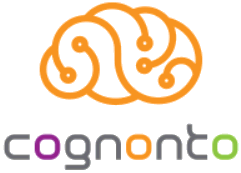 Upper Structure, Typologies Updated
Upper Structure, Typologies Updated
Cognonto today released version 1.10 of its KBpedia knowledge structure. KBpedia integrates six major knowledge bases (Wikipedia, Wikidata, OpenCyc, GeoNames, DBpedia and UMBEL), plus mappings to another 20 leading knowledge vocabularies, under the KBpedia Knowledge Ontology (KKO). KBpedia’s explicit purpose is to provide a foundation for knowledge-based artificial intelligence (KBAI) by supporting the (nearly) automatic creation of training corpuses and positive and negative training sets and feature sets for deep, unsupervised and supervised machine learning.
This new release focused on two major updates. First, certain aspects of the upper structure of the KKO were streamlined. And, second, KBpedia’s core typologies, which capture the overwhelming majority of reference concepts that are classified as entity types, were further organized to create tighter taxonomic structures.
The upper portion of the KBpedia knowledge graph required cleanup because it was still using some of the abstract-tangible distinctions used in Cyc. These distinctions were no longer used with the adoption of the universal categories of Charles S. Peirce (see my earlier article for more on this architectural design). This cleanup resulted in removing nearly 25% of the upper level links from the prior version (which were superfluous to the disjoint design of KBpedia). The typology organizations are part of an ongoing effort to streamline and tighten these structures.
Last week Cognonto’s CTO, Fred Giasson, described the general build processes we have in place for KBpedia. This release is another example of that process in action.
KBpedia contains nearly 40,000 reference concepts (RCs) and about 20 million entities. The combination of these and KBpedia’s structure results in over 6 billion logical connections across the system, as these KBpedia statistics show:
| Measure | Value | |
| No KBpedia reference concepts (RCs) | 39,052 | |
| No. mapped vocabularies | 27 | |
| Core knowledge bases | 6 | |
| Extended vocabularies | 21 | |
| No. mapped classes | 138,987 | |
| Core knowledge bases | 137,322 | |
| Extended vocabularies | 1,665 | |
| No. typologies (SuperTypes) | 63 | |
| Core entity types | 33 | |
| Other core types | 5 | |
| Extended | 25 | |
| Typology assignments | 372,967 | |
| No. of “triples” in KBpedia ontology | 1,347,818 | |
| No. aspects | 80 | |
| Direct entity assignments | 68,026,551 | |
| Inferred entity aspects | 204,704,905 | |
| No. unique entities | 19,643,718 | |
| Inferred no of entity mappings | 2,541,684,526 | |
| Total no. of “triples” | 3,689,849,183 | |
| Total no. of inferred and direct assertions | 6,251,177,427 | |
This release of KBpedia is part of an ongoing series of releases to improve and extend the knowledge structure, as well as to increase its mappings to still additional external vocabularies. You can inspect the upper portions of the KBpedia knowledge graph on the Cognonto Web site. Also, if you have an ontology editor, you can download and inspect the open source KKO directly.
About Cognonto
The insight behind Cognonto is that existing knowledge bases can be staged to automate much of the tedium and reduce the costs now required to set up and train machine learners for knowledge purposes. Cognonto’s mission is to make knowledge-based artificial intelligence (KBAI) cheaper, repeatable, and applicable to enterprise needs.
Cognonto (a portmanteau of ‘cognition’ and ‘ontology’) exploits large-scale knowledge bases and semantic technologies for machine learning, data interoperability and mapping, and fact and entity extraction and tagging. Cognonto puts its insight into practice through a knowledge structure, KBpedia, designed to support AI, and a management framework, the Cognonto Platform, for integrating enterprise and external data to gain the advantage of KBpedia’s structure.
Cognonto automates away much of the tedium and reduces costs in many areas. Cognonto offers a number of use cases for how the Cognonto Platform and KBpedia in combination with enterprise information assets may be applied.






I am a history teacher for middle school. I use e-learning in my curriculum and have conducted research to show its benefits, however, the real holy grail for teaching is for a student to answer a question in sentence, or paragraph form and an algorithm could correct the answer and remediate the student, much like a teacher could.
Am I correct in my assumption that a program like cognonto will be the basis of such abilities? If so, the impact on the teaching profession would be truly revolutionary.
Hi Dwayne,
You are correct, this is a Holy Grail. Cognonto’s KBpedia, like other knowledge graphs (KGs), IS an essential starting point for a question answering system such as you suggest. The KG is used to help parse the input question and student response to understand what is meant by the natural language. Then, connections in the graph are used to help find the appropriate answer. But two additional pieces are necessary. One is to generate a natural language response. The other, and more difficult piece, is to learn from prior responses. These pieces are now an active focus of research. Cognonto’s capabilities may be a basis for these abilities, but are not currently part of our offerings. I suspect you will see such offerings in the not-to-distant future by a variety of providers.